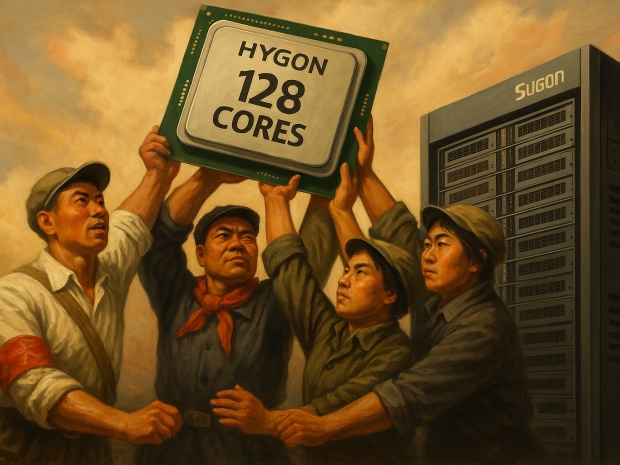Hygon, the company that once got a friendly x86 nudge from AMD, is now officially merging with server-maker Sugon in a deal that could give the Middle Kingdom its own vertically integrated supercomputing juggernaut.
In 2016 AMD decided it would be a grand idea to license its Zen CPU design and x86-64 IP to Tianjin Haiguang Advanced Technology Investment Co, or “Hygon” as the world now knows it. The idea was to feed China’s growing hunger for server silicon with something less American than Intel, while still keeping things technically “licensed.”
Hygon went on to release the Dhyana line, CPUs that never made global headlines but did see some love from Chinese tech giants like Tencent, largely thanks to Beijing’s home-grown hardware push. Meanwhile, Sugon, best known for stuffing Hygon chips into rack units and even into the 38th fastest supercomputer on Earth at one point, remained Hygon's biggest shareholder.
Now the pair have decided to make it official by merging through a stock swap. The result is a single outfit that designs the chips and builds the iron to go with them, much like IBM used to do or like Amazon does today, but with a decidedly Chinese flavour.
Hygon is said to be cooking up a monster CPU featuring 128 cores and support for 512 threads. That’s four threads per core, which neither Chipzilla nor AMD have dared to deliver yet. While SMT4 has floated around as a rumour in western chip circles, the US giants are still pootling along with two threads per core.
Combining CPUs and servers isn’t new. Hyperscalers like AWS, Microsoft, Google, Alibaba and Huawei all do it, with varying levels of secrecy and in-house flair. What makes this different is the geo-political baggage. Hygon and Sugon are already on the US Entity List, meaning they’re considered bad actors by the Bureau of Industry and Security.
The merger is likely aimed at ensuring complete domestic control over high-performance computing infrastructure, particularly with AI and big data driving both civilian and military projects under Beijing’s digital sovereignty crusade.




